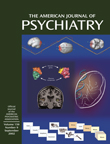Intact Suppression of Increased False Recognition in Schizophrenia
Abstract
OBJECTIVE: Recognition memory is impaired in patients with schizophrenia, as they rely largely on item familiarity, rather than conscious recollection, to make mnemonic decisions. False recognition of novel items (foils) is increased in schizophrenia and may relate to this deficit in conscious recollection. By studying pictures of the target word during encoding, healthy adults can suppress false recognition. This study examined the effect of pictorial encoding on subsequent recognition of repeated foils in patients with schizophrenia. METHOD: The study included 40 patients with schizophrenia and 32 healthy comparison subjects. After incidental encoding of 60 words or pictures, subjects were tested for recognition of target items intermixed with 60 new foils. These new foils were subsequently repeated following either a two- or 24-word delay. Subjects were instructed to label these repeated foils as new and not to mistake them for old target words. RESULTS: Schizophrenic patients showed greater overall false recognition of repeated foils. The rate of false recognition of repeated foils was lower after picture encoding than after word encoding. Despite higher levels of false recognition of repeated new items, patients and comparison subjects demonstrated a similar degree of false recognition suppression after picture, as compared to word, encoding. CONCLUSIONS: Patients with schizophrenia displayed greater false recognition of repeated foils than comparison subjects, suggesting both a decrement of item- (or source-) specific recollection and a consequent reliance on familiarity in schizophrenia. Despite these deficits, presenting pictorial information at encoding allowed schizophrenic subjects to suppress false recognition to a similar degree as the comparison group, implying the intact use of a high-level cognitive strategy in this population.



